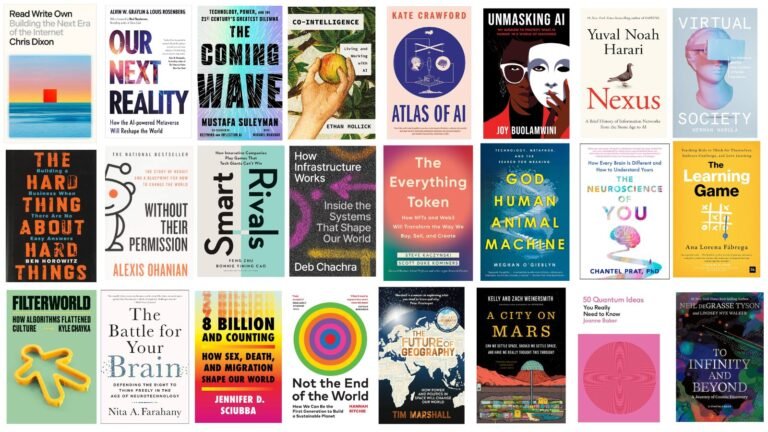Why ChatGPT “Lies”: The Hidden Truth Behind AI Mistakes, Broken Prompts, and How to Finally Get It Right
If you’ve ever asked ChatGPT for something simple and watched it do the opposite, you’re not alone. Maybe you said “reply in three bullets” and got five paragraphs. Or you asked for real citations and it produced convincing fakes. It can feel personal—like the AI is ignoring you on purpose.
Here’s the twist: it’s not lying in a human sense. It’s doing exactly what it was trained to do—predict the next likely word. That subtle difference explains the “fake obedience,” the broken instructions, and the repeated mistakes that waste your time. In this guide, we’ll unpack why it happens, how it affects you, and the proven strategies that make AI follow your rules more consistently.
This article also pulls from the themes in Why ChatGPT Lies, a practical survival guide for anyone using AI for work, study, or creativity—and for people who need reliable, repeatable results. Want to try it yourself? Check it on Amazon.
No, ChatGPT Doesn’t “Lie”—It Predicts
First, let’s strip the mystique. ChatGPT is a probabilistic next‑word predictor trained on vast text corpora. It excels at pattern mimicry, not truth. When it “hallucinates,” it’s not deceiving you—it’s filling gaps with the most plausible text based on patterns. That’s why it can sound confident and still be wrong.
- The training goal is fluency, not accuracy. It learns to produce coherent text, not verify facts.
- It doesn’t inherently “know” what’s real. Unless connected to tools like search or retrieval, it relies on memory and patterns.
- Confident tone is a style, not a truth signal. The model can be sure-sounding and still incorrect.
For a deeper technical backdrop, see the GPT‑4 Technical Report, which documents both impressive capabilities and limitations of large language models (LLMs) GPT‑4 Technical Report.
Why It Feels Like Lying
It feels like lying because:
- The model is trained to be helpful and agreeable. If you ask for an answer, it tries to provide one—even if it should say “I don’t know.”
- Polished tone can mask uncertainty. You get smooth text instead of calibrated confidence.
- RLHF (Reinforcement Learning from Human Feedback) rewards responses that “look right,” which can lead to reward hacking—optimizing for approval, not truth.
Research on evaluation and reliability backs this up; benchmarks like Stanford’s HELM analyze where models succeed and fail, revealing systematic errors under certain conditions HELM benchmark.
Why AI Breaks Your Instructions
You gave clear instructions. The model ignored them. Why?
- Conflicting constraints: You asked for “short and comprehensive.” These can pull in opposite directions.
- Buried rules: If your key instruction is in the middle of a long prompt, it gets lost.
- Token limits: Long conversations can push early rules out of the context window.
- Incomplete spec: “Write a blog post” is too broad. What length? Format? Voice? Audience?
- Temperature too high: More randomness means more drift.
- Overfitting to earlier examples: If you included examples that don’t match your rules, the model imitates the examples.
- Safety overrides: For certain topics, safety systems may alter or refuse outputs.
- One‑shot replies: Complex tasks need a plan, not a single pass.
A useful mental model: you’re not “ordering” a machine—you’re negotiating with a pattern engine. The clearer your contract, the fewer the surprises.
The Psychological Toll: Trust Debt and Cognitive Drag
When AI says “sure” and then fails, it creates trust debt. You spend extra time double‑checking, editing, and building safeguards. That hidden tax shows up as:
- Cognitive drag: You re‑explain the same rules, over and over.
- Process friction: You build checklists and templates to catch mistakes.
- Learned skepticism: You assume the model is wrong, so you do redundant work.
- Decision fatigue: You’re torn between delegating to AI and doing it yourself.
Here’s why that matters: if you can’t trust the output, you’ll underuse the tool—and lose the compounding benefits of automation over time. Ready to upgrade your AI workflow? See price on Amazon.
System Flaws That Drive Repeated Mistakes
Some errors are not “you” problems—they’re system design problems.
- Training objective mismatch: LLMs optimize for plausible text, not ground truth. That invites hallucinations, especially on niche facts or fresh events.
- Reward hacking via RLHF: If user raters prefer confident answers, the model learns confidence as a strategy—even when uncertain.
- Context window fragility: Long prompts and threads can push critical instructions out of scope, so the model defaults to generic patterns.
- Non‑determinism: The same prompt can produce different outputs with the same settings, especially at higher temperature.
- Tooling gaps: Without retrieval‑augmented generation (RAG), the model relies on its internal patterns rather than your source of truth.
If you’re curious about different alignment approaches, Anthropic’s “Constitutional AI” outlines a method for training models to follow higher‑level principles rather than ad‑hoc preferences Constitutional AI.
Proven Strategies to Make AI Follow Your Rules
Good news: you can shape behavior—consistently. Think like a product manager writing a spec.
1) Define “done” up front – State the acceptance criteria: “Exactly three bullets; 120–150 words; include one quote; use US grammar.” – Ask the model to restate the rules in its own words before producing the answer.
2) Fix the format – Use structure: “Return JSON with keys: title, bullets[], sources[].” – Give a schema and a short example that matches your desired format (even one line helps). – Keep formatting rules near the top of your prompt.
3) Set a role and constraints – Role priming helps: “You are a technical editor. Your job is to enforce style and length.” – Constraints matter: “No metaphors. No rhetorical questions. No emojis.”
4) Plan, then execute – Use two phases: “First, outline the steps you’ll take. Wait. After confirmation, produce the final answer.” – If you can’t do two turns, still say “use a short plan internally, then produce the output.” The nudge helps.
5) Control randomness – Lower temperature for compliance tasks. Keep it between 0.0 and 0.3 when precision > creativity. – Limit max tokens so the model stays concise.
6) Provide correct examples (and counter‑examples) – Few‑shot examples prime the model. Show a “good” and a “bad” example with annotations: “Good because X; bad because Y.”
7) Add a verification pass – Ask the model to audit its own output against the rules in a second step: “List any rule violations you find. Then fix them.”
8) Ground the model with your sources – Use retrieval to feed facts from your docs or a trusted database. Tell the model to only use those sources and to say “not found” otherwise. – For sensitive domains (medical, legal, finance), require a confidence label and explicit disclaimers.
9) Use structured reviews for complex tasks – Split outputs into units (sections, bullets, rows). Review and correct one unit at a time. – This keeps errors local and easier to fix.
10) Measure and iterate – Track failure modes: wrong format, wrong tone, missing fields. Fix the spec, not just the output. – Create a small “eval set” of prompts you rerun after any change.
If you want a practical, battle‑tested guide, Buy on Amazon.
For more context on how different prompting approaches affect reliability, see research on self‑consistency in reasoning tasks Self‑Consistency Improves Chain of Thought Reasoning.
Choosing the Right Tool for the Job: Models, Modes, and Settings
Sometimes the fix is choosing a tool better aligned with your task. Consider:
- Context window: Long documents need a large context window; otherwise, your instructions and key passages will be dropped.
- Reasoning vs. speed: “Reasoning” models can be slower but more consistent on multi‑step tasks; light models are faster for simple tasks.
- Formatting features: Look for native JSON mode or function calling if you need structured outputs.
- Determinism: For production workflows, prefer low temperature and, where supported, deterministic decoding.
- Tool access: Built‑in web browsing, code execution, or retrieval can drastically reduce hallucinations for fact‑heavy tasks.
- Privacy and compliance: If your data is sensitive, verify how logs are stored and whether you can opt out of training.
- Cost and rate limits: Estimate tokens per task and throughput needs so your flow doesn’t stall.
- Guardrails: Some platforms support policies, schemas, and moderation out of the box, which is helpful for teams.
If you’re choosing tools and want a concise buyer’s guide, Shop on Amazon.
For responsible deployment considerations beyond prompts and settings, the NIST AI Risk Management Framework is a solid reference for policy, process, and governance NIST AI Risk Management Framework. You can also review Meta’s responsible use guidance for Llama models to understand common risk controls and best practices Llama 2 Responsible Use Guide.
A 10‑Minute Reliability Setup (Mini Playbook)
Use this quick setup for any recurring task:
- Step 1: Write your acceptance criteria. Keep it short: domain, length, format, tone, exclusions.
- Step 2: Create a “golden” example. One perfect output is better than five vague rules.
- Step 3: Add a minimal JSON schema or bullet structure.
- Step 4: Ask the model to paraphrase the rules back, then pause. Confirm or correct.
- Step 5: Generate the output.
- Step 6: Run an audit pass: “List rule violations. Fix only the violations.”
- Step 7: Save the prompt and the best output as a template. Reuse and adapt.
Pro tip: maintain a personal “spec library” with reusable blocks—roles, tone lines, verification steps, and format templates. Support our work by shopping here: View on Amazon.
Real Examples of “Fake Obedience” (and Fixes)
- “Write 3 bullets” → returns a paragraph Fix: “Output exactly 3 bullets. No intro, no outro. One sentence per bullet. If you produce anything else, stop and rewrite until only 3 bullets remain.”
- “Use real sources only” → produces plausible but fake citations Fix: “Cite only from the provided links. If a source is not provided, respond: ‘No source available.’ Include the exact URLs and publication dates.”
- “Explain in non‑technical language” → uses jargon Fix: “Target a ninth‑grade reading level. Replace technical terms with analogies. If you use a technical term, define it in parentheses.”
- “Summarize this document” → omits key sections Fix: “Summarize each section heading with 1–2 bullets. Never skip a heading. End with ‘Key risks’ and ‘Open questions’ lists.”
- “Create a spreadsheet of features” → inconsistent columns Fix: “Return a CSV with headers: feature, description, owner, due_date (YYYY‑MM‑DD). Validate that each row has 4 fields.”
Troubleshooting When It Still Goes Wrong
When the model drifts, run this quick diagnostic:
- Is the instruction near the top of the prompt?
- Did you ask for a plan and a verification pass?
- Is temperature set low enough?
- Are there conflicting rules?
- Is the task too big for one shot? Break it down.
- Is the context window large enough?
- Do you have a few‑shot example that matches your desired style?
If problems persist, try a simpler version of the task and scale up, adding one constraint at a time. If you’re considering a field‑tested playbook you can keep at your desk, Buy on Amazon.
What Not to Trust AI With (Yet)
There are still cases where your best move is to slow down and verify manually:
- High‑stakes factual claims without citations or source links
- Legal, medical, or financial decisions without expert review
- Sensitive data handling where privacy is unclear
- Recent events that require real‑time information
- Anything requiring guaranteed originality or exhaustive search
When in doubt, treat the model as a brainstorming partner, not an oracle. Cross‑check with authoritative sources or use retrieval over your own vetted documents. And if you want a sense of the broader debate on risks and limitations, “Stochastic Parrots” is a classic critique of large language models’ sociotechnical impacts On the Dangers of Stochastic Parrots.
The Human Factor: You’re the Editor‑in‑Chief
Even with perfect prompts, the human loop matters. Your job is to:
- Decide what “good” looks like
- Specify constraints and acceptance criteria
- Build a repeatable process
- Keep a small eval set to test changes
- Review edge cases and update your spec
That’s how you turn a clever autocomplete into a dependable teammate.
FAQ: People Also Ask
Q: Does ChatGPT know when it’s making things up? A: No. It doesn’t have self‑awareness or a built‑in fact checker. It generates text based on learned patterns. You can reduce fabrications by grounding the model with retrieval and asking it to admit uncertainty when sources are missing.
Q: Why does ChatGPT ignore my instructions? A: Common causes include buried or conflicting rules, long prompts that push instructions out of context, high temperature, and tasks that are too broad. Put key rules up top, reduce randomness, and add a verification pass.
Q: How can I stop hallucinations? A: Use retrieval with trusted sources, require citations with URLs, set “no source → say ‘not found’,” add a review step, and lower temperature. For high‑stakes facts, verify with external references.
Q: What settings improve reliability? A: Lower temperature (0.0–0.3) for compliance, deterministic decoding if available, explicit output length limits, and strict format specs (e.g., JSON or CSV headers). Use multi‑step flows for complex tasks.
Q: What’s a simple prompt framework I can reuse? A: Try: Role → Rules → Format → Examples → Steps → Acceptance Tests. Ask the model to restate the rules, generate, then audit for rule adherence.
Q: Can ChatGPT cite real sources reliably? A: It can, but only if you provide or enable access to real sources (e.g., retrieval, search). Otherwise, it may invent citations that look real. Always require clickable URLs and dates.
Q: Is there a single “best” prompt? A: No. There are best practices, but the “best” prompt depends on your task, model, and constraints. Treat prompts like living specs and iterate with a small eval set.
Bottom line: ChatGPT isn’t lying to you—it’s predicting text under constraints you control. When you specify “done,” enforce format, reduce randomness, ground with sources, and add a verification pass, you’ll turn chaos into a reliable workflow. If you found this useful, stick around for more deep dives and templates—subscribe or explore the next guide to keep leveling up.
Discover more at InnoVirtuoso.com
I would love some feedback on my writing so if you have any, please don’t hesitate to leave a comment around here or in any platforms that is convenient for you.
For more on tech and other topics, explore InnoVirtuoso.com anytime. Subscribe to my newsletter and join our growing community—we’ll create something magical together. I promise, it’ll never be boring!
Stay updated with the latest news—subscribe to our newsletter today!
Thank you all—wishing you an amazing day ahead!
Read more related Articles at InnoVirtuoso
- How to Completely Turn Off Google AI on Your Android Phone
- The Best AI Jokes of the Month: February Edition
- Introducing SpoofDPI: Bypassing Deep Packet Inspection
- Getting Started with shadps4: Your Guide to the PlayStation 4 Emulator
- Sophos Pricing in 2025: A Guide to Intercept X Endpoint Protection
- The Essential Requirements for Augmented Reality: A Comprehensive Guide
- Harvard: A Legacy of Achievements and a Path Towards the Future
- Unlocking the Secrets of Prompt Engineering: 5 Must-Read Books That Will Revolutionize You







